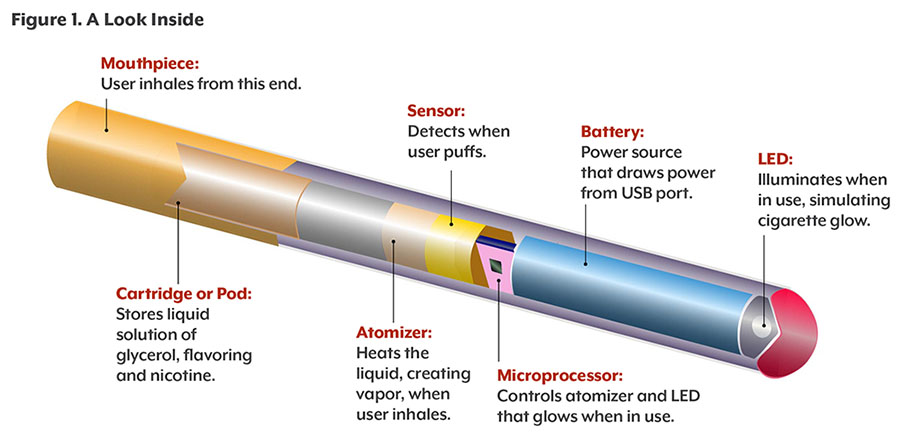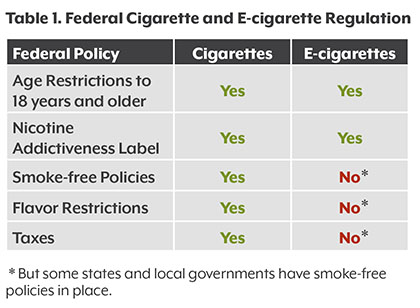Cinnatoast Munch. Pebbles Donuts. Ultra Magnetic Fruit Loop. These might sound like the names of breakfast cereals targeting kids, but you won’t find them in any grocery store.
Instead, they are flavors added to the liquid in e-cigarettes, the increasingly popular battery-operated cigarette substitutes that produce a vapor containing nicotine and other chemicals.

Annual sales of e-cigarettes and other vapor-producing devices—including the tiny JUUL e-cigarettes that have found an enthusiastic market among teens—are growing exponentially. Worldwide sales skyrocketed to $2.7 billion in 2014 from $20 million in 2008.1 One estimate calls for e-cigarette sales alone, not including vaporizers, to top $2 billion this year in the U.S.2
Today, roughly one of four Colorado high schoolers (26 percent) reports using an e-cigarette recently, three times higher than the 8.6 percent who reported recently smoking cigarettes.3
Colorado teens, in fact, lead the nation in the rate of recent e-cigarette use—defined as at least once during the previous 30 days. The Colorado rate is twice the national average.4
But research hasn’t kept pace with this explosive growth, and little data exists about possible long-term health implications of using e-cigarettes.
A product that was launched a little more than a decade ago as a safer alternative to smoking tobacco is now fueling a great deal of debate.
Public health advocates worry that e-cigarettes are contributing to a new generation hooked on nicotine, a “gateway” to cigarette smoking that could reverse years of declining cigarette sales. Medical professionals fear that inhaling the flavored vapor in e-cigarettes will cause harmful health consequences down the road.
Others, particularly manufacturers and retailers, argue that e-cigarettes are less harmful than tobacco and that they help smokers cut back and ultimately kick the habit.
How the debate plays out will affect the breadth and timing of future regulations. Already, the federal Food and Drug Administration (FDA), states and localities are moving quickly to address e-cigarette policy through new laws and rules.
This paper provides a closer look at e-cigarette use, summarizes the known health effects and outcomes, and reviews policy options.
Listen to report author Jalyn Ingalls discuss the implications of her research.
E-cigarettes, also known as electronic nicotine delivery systems (ENDS), simulate the experience of tobacco smoking. Many even look like a cigarette.
E-cigarettes come in disposable and rechargeable models. Vape and vaporizer devices have refillable cartridges called pods, which contain the liquid that is heated. These devices do not burn tobacco like traditional cigarettes do. Cartridges can last for a day or two weeks, depending on how often the user takes a puff.
The term e-cigarette is used in this paper. Some research and data may use the term e-vapor product. Other common terms: Vapes, vaporizers, vape pens, hookah pens, electronic cigarettes, and e-pipes.







